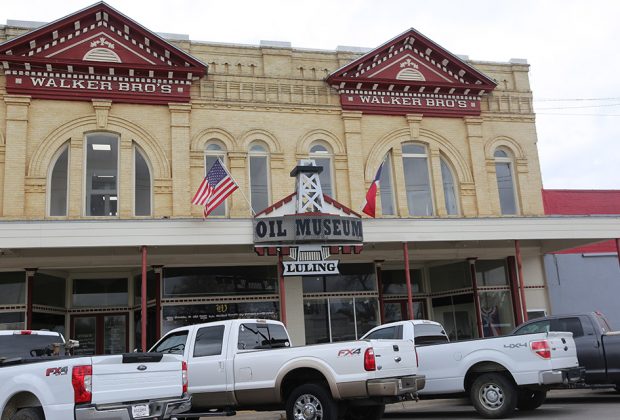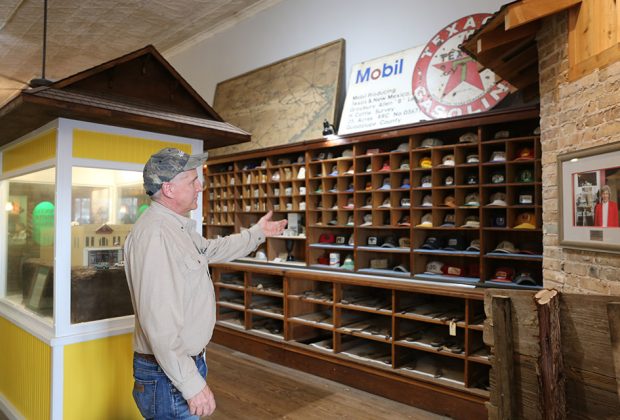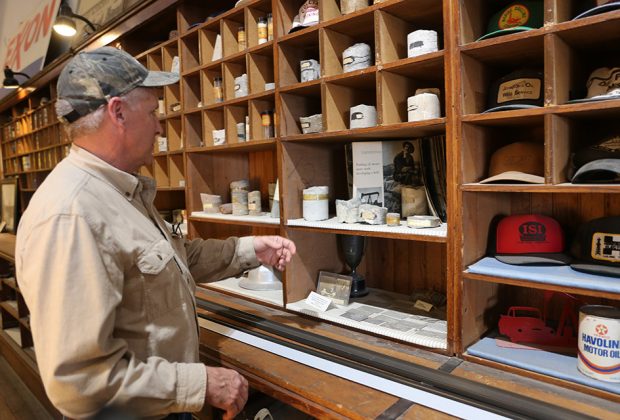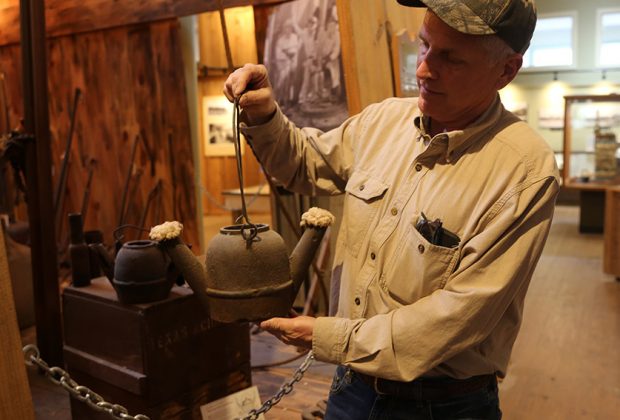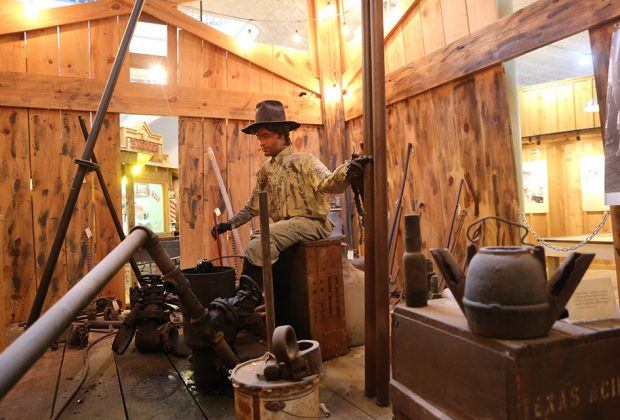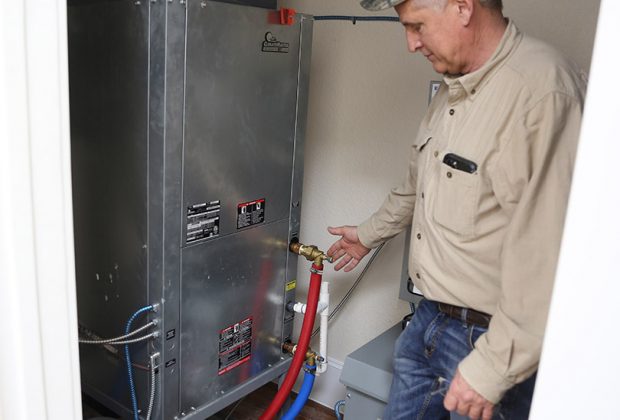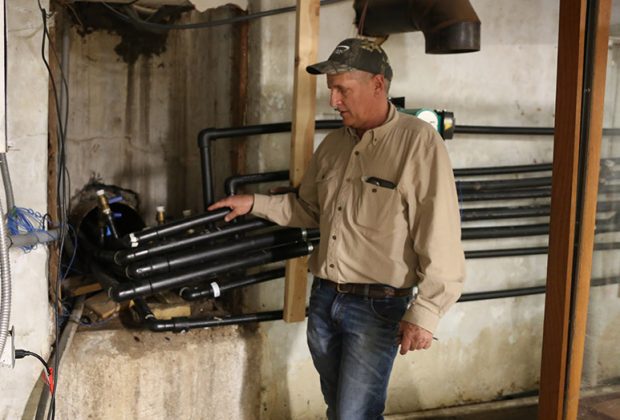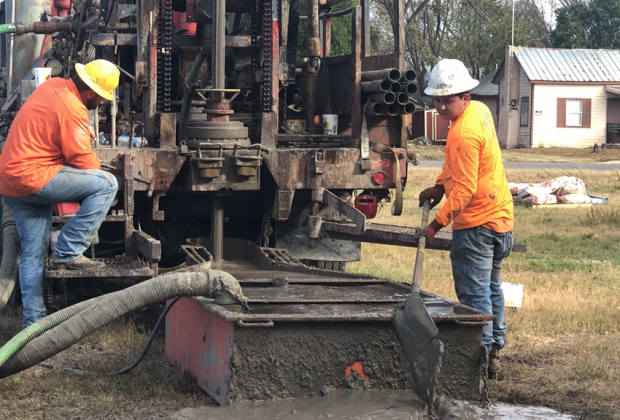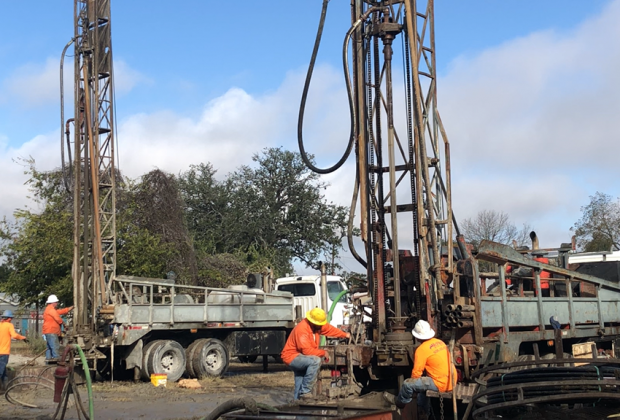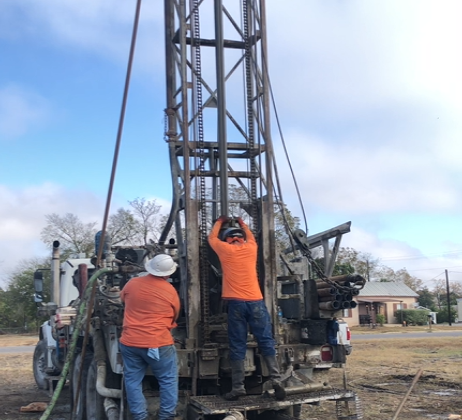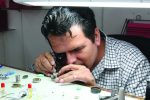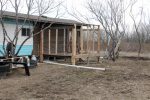Luling Oil Museum reopening with focus on past, but eye on the future
By Kristen Meriwether, Editor LPR
After months of renovations, the Luling Oil Museum reopened its doors on March 15. The museum will continue to celebrate the rich and unique history of the Luling oil fields but will do so with a strong hold on its future.
The museum is housed in the old Walker Brothers building in downtown Luling. Built in 1885, the mercantile store sold everything from nails and hammers, to ladies shoes, to toys. It was the oldest continually operating mercantile store in the Texas until it closed in 1984.
The Luling Oil Museum purchased the building in 1994 and set out to showcase what made Luling one of the toughest towns in Texas. There are dozens of vintage photos of men working the oil rigs from the early 1920s, and maps showing the expanse of oil in the region. Original tools that were donated to the museum line some of the original Walker Brothers shelves. Bricks with a name and year (1907) scratched into it, and an old guest book from the Wilson Hotel from 1925 that was rescued from a burning trash fire are sealed in cases.
For over two decades the building has also housed the Luling Chamber of Commerce, the Luling Economic Development offices, as well as the Watermelon Thump offices. But the museums only real source of revenue was its nominal entry fee, and generous donations.
Several years ago, the Museum raised enough money to put in a new elevator. It made the antique building ADA compliant, but also gave them a way to take advantage of the spacious second floor.
Shortly after the elevator was installed the Museum began to raise money for upstairs renovation. Costa Energy LLC, who has been a generous support of the Museum through the years, said they would soon relocate their offices. For the first time in the Museum’s history, they could have steady revenue in the form of a rent check coming in every month.
HVAC
A priority for making the second-floor usable would be to get air conditioning into the space. Heating and cooling a 22,000 square foot building, particularly with a west-facing front, is not cheap.
President of the Luling Oil Museum Board of Directors Tracy Perryman told LPR in a March 11 interview that the museum looked into replacing the old system they had with a traditional A/C system that has compressors on the outside (like what you have at your house). The cost up front would be roughly $75,000, but the potential for having to replace some, or all, of the units in six or seven years didn’t seem like a smart investment.
The HVAC company they worked with pitched using a geothermal system. Instead of noisy compressors exposed to the elements, geothermal systems uses water pumped through wells underground by a heat pump. With the ground staying at a constant 71 degrees (regardless of the temperature outside), the ground is able to naturally cool or warm the water circulating through the system. It sounds high-tech, but the technology has been around since the 1960s.
It’s rarely used due to the huge up-front costs. But the maintenance is almost non-existent. In fact, companies who install these systems can choose to construct the building or a parking lot on top of the wells.
“The more we talked about it, we realized we had the nice lot, the basement to run the lines through, and it just seemed to fit,” Perryman said. “It was perfect for what we needed.”
Knowing the investment would allow them to have a revenue-generating tenant, the Museum made the $180,000 investment. It is the first geothermal HVAC system in Luling.
They hired a company to drill 36 wells, with each well providing 1 ton of cooling/heating. Each well, which sit 20 feet apart in the lot behind the museum, runs 300 feet deep, four feet below the surface.
It’s a closed water system, meaning the same water flowing thorough the pipes today will be there 50 years from now.
“The geothermal, yes, it’s expensive up front, but in the long run, its 70 percent more efficient on heating, and 40 percent more on cooling,” Perryman said.
Costa moved into their space a few weeks ago, and Perryman reported they are set to collect their first rent check April 1. They hope that money, the monthly energy savings from the energy efficient system, as well as an LCRA grant can help them finish renovating the rest of the second floor. They want to paint the walls and the ceiling, replace the florescent light with newer LED light, and hang large photos of the City of Luling and the Luling oil fields. The space could be used as an events space for the city.
